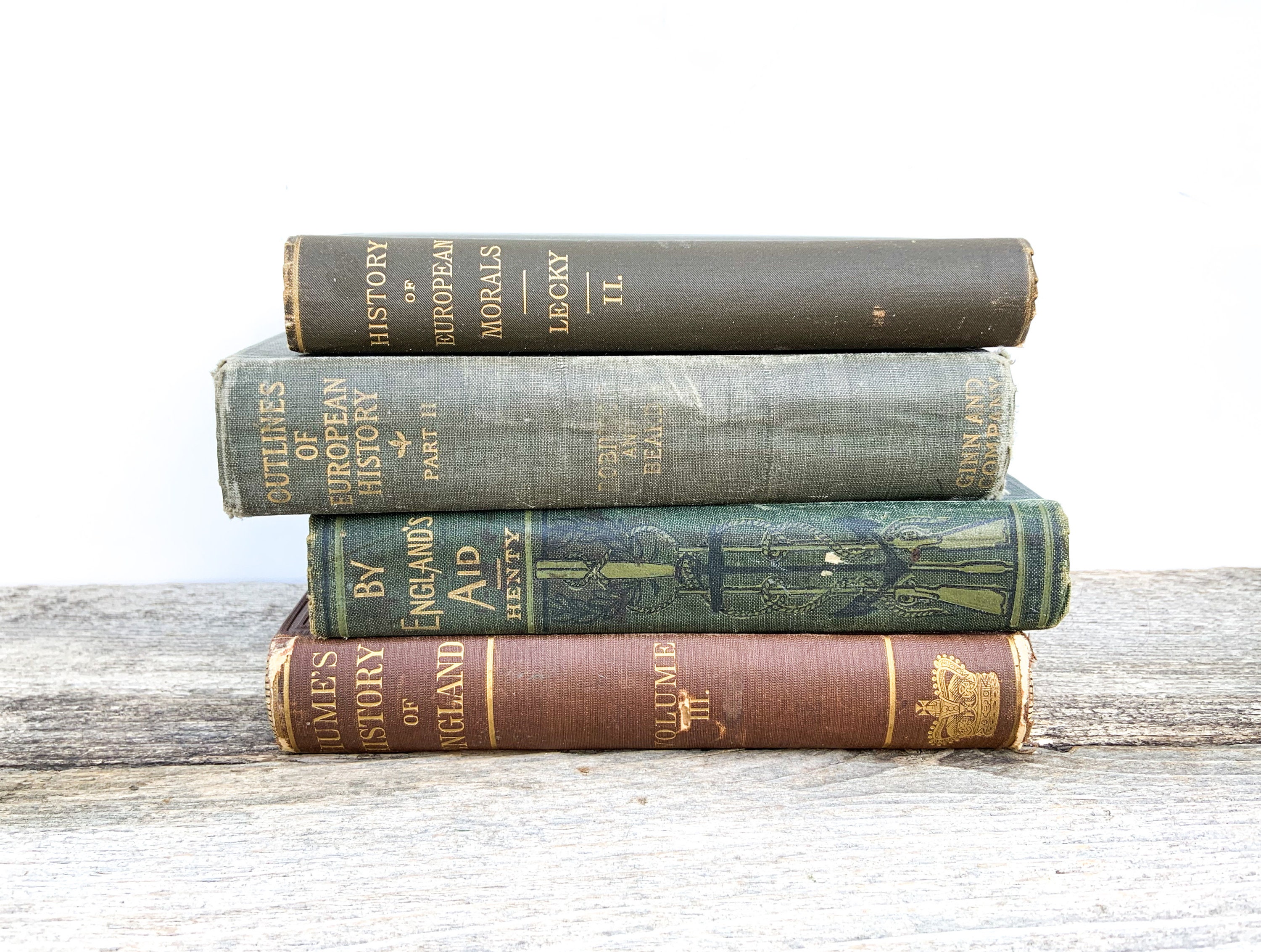Antique decorative books are more than just old texts; they are windows to the past, each with a story to tell. My own journey into the world of antique books began unexpectedly, sparked by a chance visit to a quaint local bookstore overflowing with forgotten treasures. As I thumbed through the pages of a beautifully bound volume, I could feel the history radiating from it, igniting a passion that has since turned into a captivating hobby. In this comprehensive guide, we’ll explore the allure of antique decorative books, how to choose, display, and care for them, and how they can enhance any space.
What Are Antique Decorative Books?
Antique decorative books refer to books that not only serve as literature but also as beautiful decorative items. These books often feature intricate bindings, stunning illustrations, and historical significance. They can range from classic literature to art books, and their aesthetic appeal makes them perfect for display purposes in homes, offices, or public spaces.
Characteristics of Antique Decorative Books
- Quality Binding: Many antique books are bound in leather or cloth with ornate designs.
- Illustrations and Graphics: High-quality illustrations, engravings, or maps can enhance visual appeal.
- Unique Titles: Lesser-known works or first editions can hold historical significance and value.
- Age: Generally, books over 100 years old can be considered antiques.

Why Collect Antique Decorative Books?
Collecting antique decorative books offers numerous benefits. Here are a few compelling reasons why you might consider starting your own collection:

1. Historical Significance
Owning a piece of literature that has survived through generations can provide insight into historical contexts and cultural evolution.

2. Aesthetic Appeal
Antique books can enhance the décor of any room, offering a touch of elegance and sophistication that modern books may lack.

3. Investment Potential
Rare and well-preserved antique books can appreciate in value over time, making them a worthwhile investment.

How to Choose Antique Decorative Books
When selecting antique decorative books for your collection, consider the following aspects:

Condition
Assess the book’s condition carefully. Look for signs of wear, tears, or fading. While some imperfections add character, significant damage can affect both value and aesthetics.

Age and Rarity
Older and rarer books tend to have more value. Look for first editions or limited releases to enhance your collection’s significance.
Binding and Cover Design
The beauty of antique books often lies in their bindings. High-quality leather, gilded edges, or intricate designs can make a book a stunning focal point.
Displaying Antique Decorative Books
Once you’ve chosen your antique decorative books, it’s essential to display them properly to showcase their beauty and protect them from damage. Here are some effective display techniques:
1. Bookshelves
Use a dedicated bookshelf with proper lighting to highlight your collection. Avoid overcrowding; leave space between books for airflow.
2. Coffee Tables
Stack a few decorative books on a coffee table to invite interest and conversation. Choose books with attractive covers that complement your living space.
3. Framed Displays
For particularly beautiful or rare editions, consider framing them in shadow boxes or glass displays to protect them while still showcasing their beauty.
4. Thematic Arrangements
Create thematic groups based on genres, colors, or authors for a more curated look. This adds visual interest and makes your collection more cohesive.
Caring for Antique Decorative Books
Proper care is essential in preserving the beauty and longevity of your antique decorative books. Here are essential tips:
1. Clean Regularly
Dust your books with a soft, dry microfiber cloth. Avoid using water or cleaning solutions that can damage the binding or pages.
2. Control Humidity
Keep your books in a climate-controlled environment with stable humidity levels. Ideally, humidity should be between 40-50% to prevent mold and warping.
3. Store Properly
Store books upright on shelves to avoid bending the spines. For particularly valuable items, consider using protective covers or archival boxes.
4. Avoid Direct Sunlight
Exposure to sunlight can fade covers and illustrations over time. Display books in indirect light or keep them in shaded areas.
Comparing Antique Decorative Books: A Quick Overview
Table: Types of Antique Decorative Books
| Type | Age Range | Common Characteristics | Pros | Cons |
|---|---|---|---|---|
| First Editions | Varies (usually 100+ years) | Rare, Historic Significance | High Value, Collectible | Can be Expensive |
| Leather-Bound | 100-300 years | Durable, Elegant Covers | Stunning Visuals | Susceptible to Damage |
| Illustrated Editions | Varies (often 20+ years) | Artistic Illustrations | Visually Appealing | May Lack Literary Value |
| Limited Editions | Varies (usually recent) | Selective Print Runs | Unique Ownership | Limited Availability |
Pros and Cons of Collecting Antique Decorative Books
Pros
- Enhances home décor
- Potential for investment growth
- Draws interest and conversation
- Connects you with history
Cons
- Requires careful maintenance
- Can be costly
- Finding rare items can be time-consuming
Frequently Asked Questions (FAQs)
What are antique decorative books?
Antique decorative books are historical books that possess aesthetic appeal and are often used for display purposes in addition to their literary content.
How can I find valuable antique decorative books?
Check local antique shops, estate sales, auctions, and online marketplaces. It’s crucial to research and authenticate the books’ history and value before purchasing.
How do I care for my antique decorative books?
Regularly dust them, control humidity, store them upright, and avoid direct sunlight to preserve their condition over time.
Are antique decorative books a good investment?
Yes, they can be a good investment, especially rare editions that appreciate in value. However, it requires research and knowledge to make informed purchases.
Can I read my antique decorative books?
While you can read them, handle them with care. Always wash your hands before touching the pages and consider using a book stand to avoid bending the spine.
Conclusion
Antique decorative books are not merely relics of the past; they’re vibrant pieces of art and history that can enrich our lives in many ways. Whether you are a passionate collector or someone looking to add a touch of elegance to your home, understanding how to choose, display, and care for these beautiful treasures can transform your space and connect you with centuries of literary heritage. So, embrace the allure of antique decorative books and let them tell their timeless stories in your home.